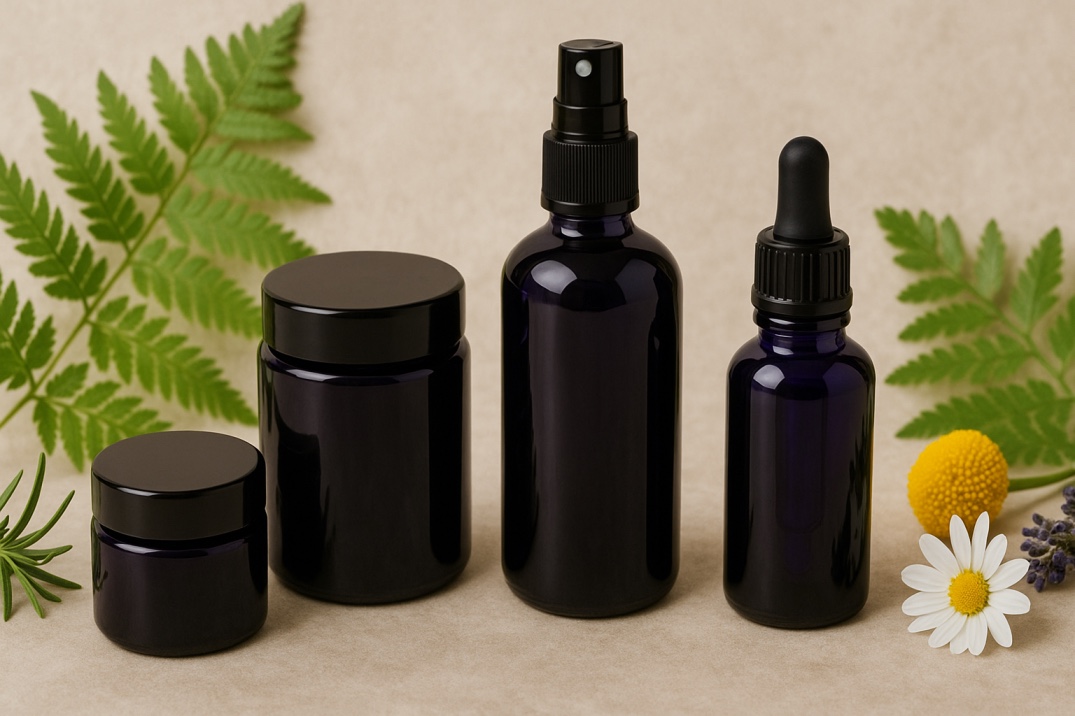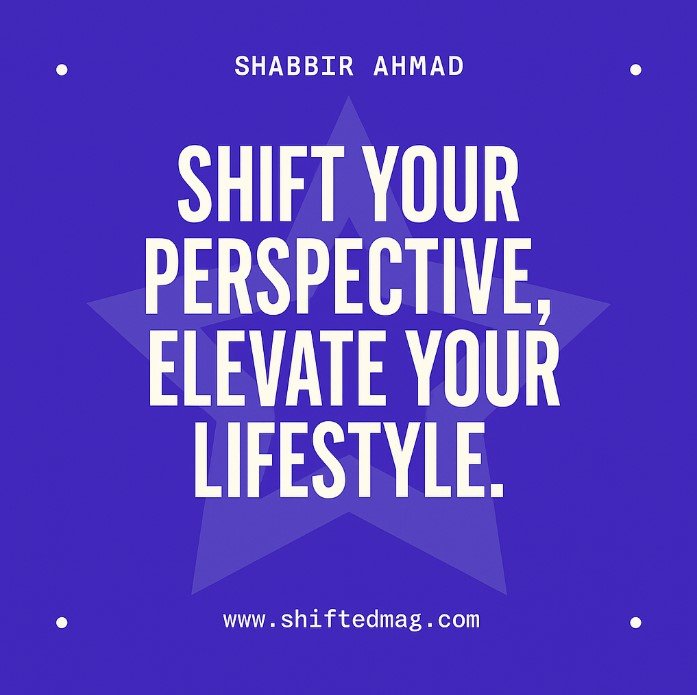Beauty
Natural Beauty in Glass: The Power of Biophotonic Packaging

Step into a contemporary skincare boutique, and you’ll immediately be struck by a refined sophistication adorning the shelves, rich violet or dark amber glass bottles that appear to radiate from within. They serve a purpose beyond mere aesthetics. Behind this captivating exterior is an innovation that is subtly transforming the way we store and preserve natural products: biophotonic glass.
The Rise of Biophotonic Technology
Today’s consumers expect a higher standard from their skincare and wellness products. There is an expectation for pure formulations, eco-friendly packaging, and extended shelf life — all achieved without the use of synthetic preservatives. Biophotonic glass has arisen from the convergence of scientific innovation, sustainable practices, and thoughtful design. Initially created for medical and botanical uses, it has evolved into the benchmark for high-quality natural cosmetics, herbal extracts, and essential oils.
This innovative material is designed to capture the inherent energy of light, providing both practical durability and aesthetic charm. To genuinely grasp the reasons behind its rising popularity, it’s beneficial to understand its mechanics.
What is Biophotonic Glass?
Biophotonic glass, often referred to as violet glass, is an advanced material engineered to selectively filter light at particular wavelengths. This glass stands apart from typical transparent or amber containers by effectively blocking most visible light, while still permitting the passage of beneficial violet, ultraviolet-A, and infrared rays.
This careful filtration method safeguards products from detrimental radiation that leads to oxidation, degradation, and bacterial proliferation. Essentially, biophotonic glass serves as a natural energy shield, preserving the potency and stability of ingredients without the need for synthetic stabilizers.
The deep, dark color of the glass goes beyond mere appearance; it embodies a fascinating scientific principle. The molecular structure engages with sunlight to preserve the product’s internal bioenergy. The outcome is a vessel that not only holds but also safeguards and elevates.
How Does Biophotonic Glass Work?
Every natural substance, be it a botanical extract, an essential oil, or a vitamin complex, exhibits sensitivity to light. With prolonged light exposure, the active compounds can degrade, resulting in diminished effectiveness and changes in fragrance or color.
Biophotonic glass addresses this issue by permitting only the advantageous light frequencies that positively impact organic matter. The violet spectrum enhances molecular stability and promotes energetic harmony within the stored product. In practical terms, this ensures that your creams maintain their smooth texture, your oils keep their delightful aroma, and your serums hold onto their effectiveness for an extended period.
This is the reason numerous contemporary brands are increasingly opting for glass cosmetic containers for their natural formulations. They’re not merely lovely to showcase — they genuinely enhance the longevity and functionality of the contents within.
The Science Behind the Magic
Studies indicate that specific wavelengths of light, especially those ranging from 380 to 420 nanometers, can positively impact organic compounds when managed effectively. The wavelengths play a crucial role in preserving molecular integrity while minimizing microbial contamination.
Standard glass lacks this level of accuracy. Clear glass allows all visible light to pass through, whereas amber or green glass obstructs a significant portion of the advantageous spectrum. Biophotonic glass achieves an exceptional equilibrium, shielding from harmful rays while permitting beneficial light to filter through. The outcome is a preservation system that harnesses the power of light in a truly organic manner.
Sustainability and Eco-Friendliness
In a time when eco-consciousness shapes buying decisions, packaging must be a primary consideration. Biophotonic glass resonates seamlessly with the current wave of environmental awareness.
Reusable and Recyclable by Design
In contrast to plastic containers that deteriorate with time or emit microplastics, biophotonic glass offers endless reusability and complete recyclability. Once the product is complete, individuals can creatively reuse the jars for organizing at home, crafting their own skincare solutions, or adding a touch of charm to their decor. The ability to reuse not only minimizes waste but also fosters a deeper emotional connection between the brand and its customers, transforming packaging into an integral aspect of the lifestyle experience.
Lower Environmental Footprint
By naturally extending the shelf life of products, biophotonic glass minimizes the occurrence of waste due to spoilage. Reducing the number of discarded products leads to a decrease in manufacturing cycles and a reduction in carbon emissions. This packaging innovation provides a sophisticated and quantifiable edge in sustainability for brands aiming for carbon-neutral objectives.
Preservation of Product Quality
Light poses a significant challenge to natural cosmetics. Ultraviolet rays and visible light have the potential to initiate oxidation and lead to molecular degradation. Through the filtration of these wavelengths, biophotonic packaging preserves the product’s color, fragrance, and texture for prolonged durations.
Longer Shelf Life Without Preservatives
By reducing the reliance on artificial preservatives, biophotonic glass aligns with the growing trend of clean beauty. Shoppers enjoy the benefits of fresher, safer products, while brands uphold their integrity through straightforward and transparent ingredient lists.
Protection Against Oxidation
Be it a vitamin C serum or an organic face oil, oxidation quietly wreaks havoc. When oxygen interacts with active compounds, the resulting product can diminish in effectiveness and might even cause irritation. Biophotonic glass significantly slows this reaction, guaranteeing that the product delivers on its promises from the very first use to the final one.
Aesthetics and the Luxury of Simplicity
The importance of visual appeal remains significant — possibly even more so in today’s social media landscape. Biophotonic glass packaging exudes a unique elegance. The rich deep violet or black hue exudes a sense of luxury and timelessness, harmonizing beautifully with brands that prioritize purity, quality, and design.
Set on a vanity or bathroom counter, these glass cosmetic jars elevate daily skincare routines into meaningful rituals. The weight and finish of the material reflect a high level of craftsmanship, providing users with the gratifying experience of engaging with a product designed for durability. In a marketplace overwhelmed by single-use plastics, that sensory engagement fosters confidence in the brand.
Marketing Advantages for Brands
In addition to its impressive technical features, biophotonic packaging provides significant advantages in marketing strategy. Contemporary shoppers link dark glass with high-end quality and eco-friendliness. A product housed in biophotonic glass instantly conveys a sense of ingenuity and attention to detail.
Brand Differentiation
In a landscape filled with numerous skincare brands vying for recognition, it is often the subtle nuances that set them apart. Packaging that informs and engages customers enhances its perceived worth. Emphasizing the science of biophotonics provides brands with a captivating story grounded in genuine innovation and advanced technology.
Storytelling Potential
Integrating the idea of “light energy preservation” enables marketers to weave a narrative that connects the realms of nature and science, an ideal blend for discerning luxury brands. This type of storytelling strikes a chord with those who seek significance and thoughtfulness in their buying choices.
Innovation in Cosmetic Packaging
The packaging industry is experiencing a subtle transformation. The transition from plastic to glass, and from disposable to durable options, reflects a growing awareness of health and environmental concerns on a global scale. Biophotonic glass signifies a new era in cosmetic packaging, harmonizing design, technology, and ecological considerations effortlessly.
From Function to Experience
Consumers have evolved in their perception of packaging, seeing it as more than just a means of containment. They view it as an integral aspect of the entire product journey, a reflection of the brand’s core values. Biophotonic containers fulfill this requirement by providing practical advantages elegantly packaged in a minimalist design. They engage both reason and feeling: a thoughtful approach for the intellect, and aesthetic appeal for the senses.
Compatibility with Natural Formulations
In contrast to plastics that may release harmful chemicals or react with oils, glass maintains its chemical stability. Biophotonic glass elevates stability, guaranteeing that even the most delicate organic ingredients stay pristine. This compatibility is essential for clean-beauty brands that steer clear of parabens and preservatives.
The Future of Biophotonic Glass in Cosmetics
The energy is undeniable. An increasing number of brands are opting for innovative glass cosmetic containers, moving away from plastic and conventional glass packaging. This change represents more than just a fleeting trend; it signifies a profound evolution rooted in scientific advancement and a commitment to sustainability.
Growth Across Industries
As beauty and skincare continue to dominate the landscape, it’s fascinating to observe how other sectors are swiftly gaining ground — from herbal supplements to gourmet food oils. The protective technology that ensures a serum remains fresh is equally effective in maintaining the flavor integrity of olive oil and the potency of herbal tinctures.
Consumer Awareness
As people become more aware of the benefits of light-filtering glass, interest is bound to grow. Campaigns focused on reducing waste, ensuring product purity, and promoting natural preservation are anticipated to propel growth in this packaging sector worldwide.
Why Choose Biophotonic Glass?
The selection of packaging for natural products plays a crucial role in maintaining quality and promoting sustainability. Biophotonic glass presents a forward-thinking solution that aligns with the natural world instead of opposing it.
It merges scientific accuracy, ecological mindfulness, and artistic elegance — three foundational elements that characterize the contemporary beauty sector. For brands aiming to differentiate themselves or for consumers who prioritize thoughtful decisions, this technology offers real advantages that go beyond mere aesthetics.
Transitioning to glass cosmetic jars allows brands to reduce waste, safeguard their formulations organically, and enhance their visual appeal. The transition is not only intelligent; it’s essential for a cleaner, more sustainable future.
FAQs About Biophotonic Packaging
1. What makes biophotonic glass different from regular glass?
Biophotonic glass effectively blocks harmful visible light, while permitting beneficial violet and infrared rays to pass, thus maintaining the integrity and potency of natural products.
2. Can biophotonic packaging really extend product shelf life?
Yes. Research and practical evaluations indicate that items preserved in biophotonic glass maintain their freshness and efficacy significantly longer than those stored in transparent or amber vessels.
3. Is biophotonic glass environmentally friendly?
Absolutely. It’s entirely recyclable, reusable, and durable, minimizing plastic waste and enhancing our environmental footprint.
4. Why is the glass usually violet or dark in color?
The violet hue serves a purpose beyond mere aesthetics; it plays a crucial role in how the glass interacts with light. The hue aligns with particular wavelengths that ensure the stability and safeguarding of organic materials.
5. Are these jars suitable for all cosmetic types?
Yes. These are highly effective for a variety of formulations, including creams, serums, balms, oils, and even powdered products. The glass remains chemically stable and does not engage with delicate components.
6. Can smaller brands afford to use biophotonic glass?
With rising demand, production expenses are on the decline. A growing number of suppliers provide adaptable solutions, ensuring accessibility for both small boutique and large-scale brands.
7. Does biophotonic glass eliminate the need for preservatives?
It notably lessens the dependence on them, although some water-based formulations might still need slight preservation based on specific standards.
Where Beauty Meets Science
In the dynamic realm of natural cosmetics, biophotonic glass emerges at the intersection of scientific innovation, sustainable practices, and artistic expression. It transcends mere packaging; it embodies a commitment to authenticity. Utilizing light as a safeguarding element rather than a harmful one helps maintain the inherent vitality of ingredients and minimizes environmental waste.
As consumers in the beauty industry grow increasingly selective and brands aim to innovate with integrity, this technology presents a straightforward way ahead. Opting for glass cosmetic containers or jars transcends mere visual appeal; it embodies a commitment to a future where each product signifies a thoughtful approach, towards skin health, environmental sustainability, and the scientific principles that unite them.
-

 Social Media2 months ago
Social Media2 months agoWhat the “67” TikTok Meme Really Means
-

 Tech2 months ago
Tech2 months agoWhat To Do When Your Business Faces Network Vulnerabilities
-

 Self Improvement2 months ago
Self Improvement2 months agoUsing BCBS Rehab to Access Quality Addiction Care
-

 Games2 months ago
Games2 months agoPusoy Strategies for Play That Also Work in Pusoy Dos in English






